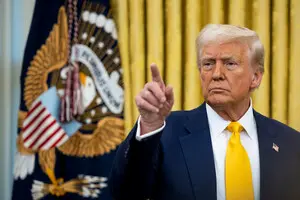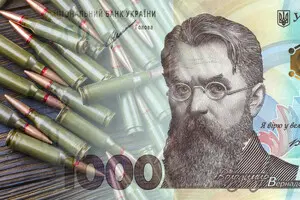Where Should EU Countries Get Money For Defense

During his first presidency, Donald Trump quite rightly demanded that European NATO members and Canada begin to meet the 2 percent of national GDP defense spending standard and, less rightly, threatened to withhold US aid in the event of a potential attack on allies who failed to do so. Of the then 30 members of the Alliance, six did not even reach the 1 percent mark, and only the United States, the United Kingdom, Poland, Latvia, Greece (due to the conflict with Turkey) and Estonia could boast of meeting the 2 percent standard in 2018 and even 2021. Even Lithuania was close but fell short at 1.96 percent of GDP.
Between 2022 and 2024, the situation improved significantly, with 23 of the current 32 Allies meeting the existing 2 percent defense spending standard. However, given the new challenges, primarily the war in Ukraine, there is already talk of raising it to 3 percent or, as per recent statements by the US president, to 5 percent of GDP.
As we noted in our previous article, defense spending of 5 percent of GDP is still unrealistic for most NATO members, even for the United States itself. On February 10, Donald Trump publicly supported Elon Musk's initiative to cut the Pentagon's budget, and on February 20, the new head of the US Defense Department, Pete Hagel, ordered the development of a plan to reduce defense spending by 8 percent annually over the next five years. If this plan is implemented (which is, in fact, unlikely), the defense budget will be reduced from the current $900 billion to less than $600 billion per year by 2030. Taking into account the expected GDP growth of the United States, this will put them on the verge of meeting the current standard of 2 percent compared to defense spending of 3.38 percent of GDP in 2024. Around the same time, according to American analysts, by 2027–2028, China will be technically ready to start hostilities in the Taiwan area, which the United States, under its own 1979 law, was obliged to support, including by military means.
At this time, European NATO allies may also be engaged in confrontation (and they will be lucky if it’s not a war with Russia).
In fact, even now the European part of NATO has barely reached the average defense spending of 2 percent of GDP. Moreover, Germany and France managed to do so only in 2024, while Italy and Spain are still hovering around 1.5 and 1.3 percent. Accordingly, these countries have a combined defense budget of about $500 billion per year.
This amount, albeit substantial, raises the question of the effectiveness of using these funds since almost all of them are allocated and spent within national budgets, and countries obviously bear the costs unevenly. A certain common defense strategy of the European countries of the Alliance exists, has been reviewed and improved in recent years. But there is no single strategy for the development of their defense complex, not even in the form of a project because everyone has always relied on the United States. Spending money only at the national level can lead to duplication of similar industrial capabilities and, even worse, research and development efforts, while leaving gaps in defense due to underproduction of other types of weapons and ammunition, whereas the development of new weapons in Europe is clearly underfunded.
According to the latest data, in 2023 (more recent data is not yet available), the EU spent the equivalent of $11.8 billion on the creation of new armament models, which is clearly incomparable to the $138.9 billion spent by the United States in the same year.
On the other hand, by spending 5 percent of GDP on defense, European NATO members would have a combined annual defense budget that would be more than a third higher than the current US budget, or about $1.25 trillion.
Such a budget, if used sparingly and taking into account the need to build a new defense industry, would allow Europe to arm itself to the point where it would not be afraid of a conventional Russian invasion even if there were no American allies on the potential battlefield. This is precisely what Europeans, alarmed by recent statements from the United States, want now.
For Ukraine, such a scenario would also be unequivocally positive. Both through increased funding for European defense, which we expect to become an important element of in the near future, and through the expansion of our European partners’ production capacities, which would allow them to at least scale up supplies to our army.
However, an overnight radical increase in defense spending would require very significant tax increases and/or cuts in social and infrastructure spending. In a situation where the majority of the EU population still does not believe in the possibility of war in their countries, this would cause significant resistance and lower ratings of the respective political forces. Politicians are currently more afraid of this than of war, so they will not take such radical steps unless absolutely necessary. This means that we need to look for alternative sources of funding, and this work is also underway.
Private investment can also be used to build the defense industry. But not without problems. For example, according to the Stockholm International Peace Research Institute (SIPRI), by the end of 2023, the top five of the world’s ten leading arms manufacturers are US-based corporations (Lockheed Martin, Raytheon Technologies, Northrop Grumman, Boeing and General Dynamics). It is doubtful that they will invest in European countries, especially under the Trump administration. The Russian Rostec state corporation, which was not in the top ten in 2021, took seventh place quite unexpectedly, apparently thanks to a giant government order, and Chinese AVIC, NORINCO and CETC, from which investments are all the more unlikely, took the 8th, 9th and 10th place, respectively. There is only one European-based company in the top ten — BAE Systems, which is a large manufacturer of equipment and electronics, mainly for military use, with annual revenues of $30.35 billion and headquarters in London.
In general, due to the excessive European pacifism of the past, defense companies in Europe have developed a rather unattractive image for investors, which has long hindered their development. However, owing to the war in Ukraine, their capitalization has recently been growing at a much higher rate than other European companies, which will surely “fix” their image.
Thus, private investment is a viable option here, but only for the development of production. But here we are not talking about trillions or even hundreds of billions, but at best a few tens of billions of dollars/euros of investment over the next few years, which is obviously not enough.
There is another option to “print” the money needed to develop the defense industry. This is not a new idea; during the Covid-19 pandemic, European countries and the United States issued almost hundreds of billions of euros and dollars, essentially unsecured. This made it possible to develop and distribute vaccines on a massive scale, support the healthcare system and organize payments to families who had to stay at home for months. But this method of financing also has an obvious disadvantage: inflation.
An attempt to “print” 600–700 billion euros in a year, which is necessary to achieve the target of 5 percent of GDP defense spending, can end up no less disastrous for governments than an attempt to raise taxes or reduce other budget expenditures for the same purpose. So, if European countries use this method of financing defense, they will do so with great caution, at no more than €50–70 billion a year, so as not to repeat the sad records of “Covid” inflation in 2021–2023.
The only option left is to borrow money both within Europe and in the United States or even Southeast Asia. Therefore, the option of issuing defense bonds is increasingly being discussed within the EU.
The main supranational issuers in Europe, such as the European Union, the European Stability Mechanism and the European Investment Bank, have the highest possible credit rating of AAA and thus can raise funds at 2.5–3 percent interest per annum.
By the way, the latter have been actively involved in the response to the coronavirus pandemic with budgets of €240 billion and €200 billion, respectively. The amounts are comparable to those needed in our case. However, for defense purposes, it is optimal to make such borrowings for at least three years, and the financing mechanisms would be somewhat different.
If we borrowed, for example, €600 billion, even at 3 percent interest per annum, we would have to spend €18 billion annually on interest payments. The amount is considerable, but let’s not forget that we are talking about European NATO members, among which four countries (Germany, the United Kingdom, France and Italy) are among the top ten economies in the world, with Spain and the Netherlands together also having more than $3 trillion in annual GDP. In total, European members of the Alliance, even without Türkiye, have a GDP of almost $23.5 trillion per year. Thus, less than 0.1 percent of annual GDP will be spent on debt service per year. Even if borrowed for three years in a row, interest payments would require 0.23 percent of annual GDP instead of the almost 3 percent that is currently lacking. Therefore, this option seems to be the most viable and realistic today.
Of course, it also has a disadvantage: the money will have to be repaid, even if it is in five or even ten years. The things that are so feared now, namely tax increases and cuts in social and other budget expenditures, will still have to be done. But this option will make it possible to provide Europe with reliable protection rather quickly, significantly extending the negative consequences of increased funding for citizens.
For Ukraine, this option is also nearly perfect. This debt will not affect us, as we are not yet a member of either the EU or NATO. Instead, we would surely receive the aforementioned increase in supplies to the Armed Forces if such a program were implemented. Moreover, we could count on billions, if not tens of billions of euros of investment in our arms manufacturers. After all, both development and production in Ukraine are still several times cheaper than even in Europe, not to mention the United States, and the qualifications and experience of our personnel may be even higher than those of Europeans.
Therefore, Ukraine should gently promote the idea of issuing European defense bonds. Moreover, we already have experience in issuing military bonds, so technically, the Ukrainian side could even provide some advice to European partners.
So, let's hope that the talks will move into a practical plane, and Europe will finally become great again.
Please select it with the mouse and press Ctrl+Enter or Submit a bug
















 Login with Google
Login with Google